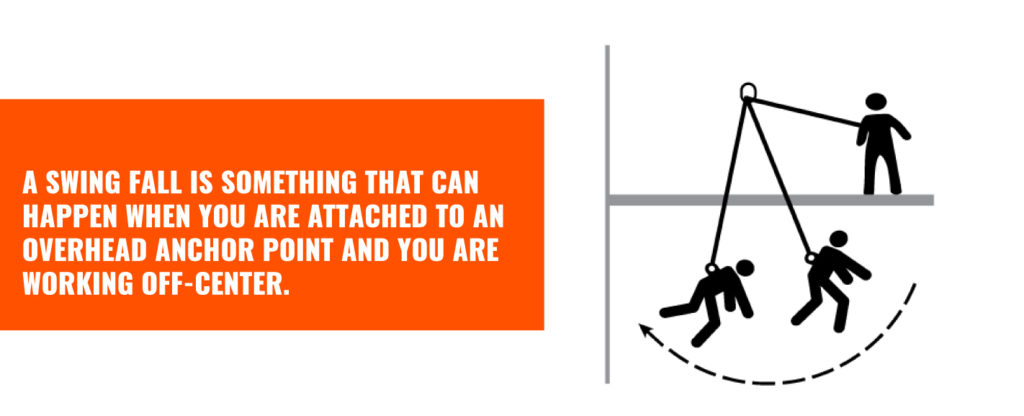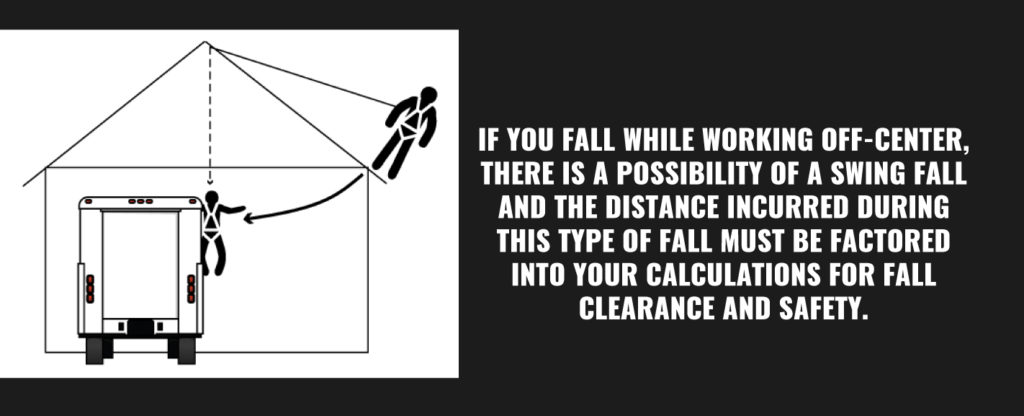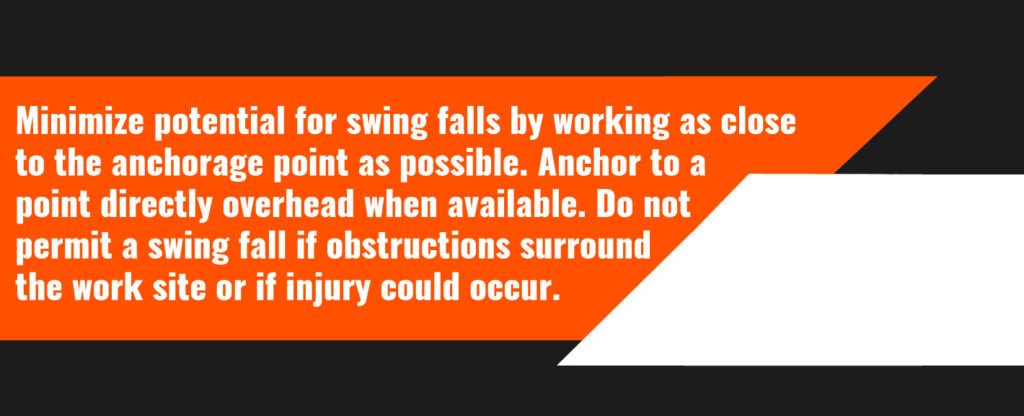What is a Fall Swing?
According to the Occupational Safety and Health Administration (OSHA) defines “swing fall” as the following:
“The swing fall hazard is created by the pendulum effect, which can swing a fallen worker into a nearby surface, such as a wall or protruding beam. In addition to calculating the total fall clearance distance before beginning work on an elevated level, it is important to evaluate the swing fall hazard at the edges where a worker might fall.”
The American National Standards Institute (ANSI) also has definitions regarding swing falls.
ANSI Z359.0, definition 2.190, swing falls are, “A pendulum-like motion that occurs during and/or after a vertical fall. A swing fall results when an authorized person begins a fall from a position that is located horizontally away from a fixed anchorage.”
Another definition, 2.191, describes swing fall distance as, “The vertical drop in height experienced by the worker using a fall arrest system from the onset of the swinging motion to the lowest point reached during the swing.”

When do Swing Falls Happen?
Swing falls occur when the anchor point is not directly above the point at which the fall takes place. The downward force of gravity combined with the side-to-side force of the fall arresting system can create a dangerous swinging motion that can cause a falling worker without proper clearance to strike surrounding objects or obstructions with enough force to potentially cause serious injury or death. Installing the anchorage point directly above the work area (i.e., connected to an overhead attachment point with sufficient strength) will help prevent injury.

Swing falls significantly increase fall arrest distance. This can be problematic with anchorages that are 15 feet or lower because when calculating fall clearance, you will need additional safety factors. It is a good idea to go through the hierarchy of fall protection: attempt to eliminate the hazard or bring the hazard to ground level, move to working in fall restraint, or if not possible, work in fall arrest, and seek out options that can reduce or eliminate swing fall.

How to Reduce the Occurrence of a Swing Fall
Some options that can reduce or eliminate swing fall are:
- A permanent or temporary horizontal lifeline system
- A rigid track fall protection system
- Mobile fall protection anchorage
- A trolley style beam anchor (if anchoring to I beams)
All of the options above combine fall protection anchorage with mobility and can move with a worker to some degree while they perform tasks. Although swing fall hazards can still exist, the ability for your anchor to travel with the worker can place the anchor directly overhead or close to that. Keep in mind that when using a self-retracting lifeline, there will be information on the label or in the manual on the maximum off-plum usage. Malta Dynamics suggests that you should not go beyond 30 degrees off-plum with their self-retracting lifelines.
Have a fall protection question?
Submit your question, and you could be featured on Dynamic Discussions!

